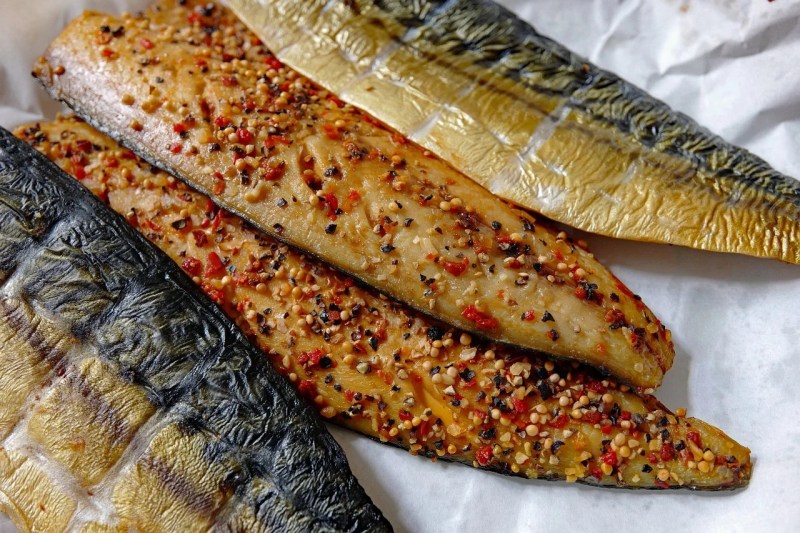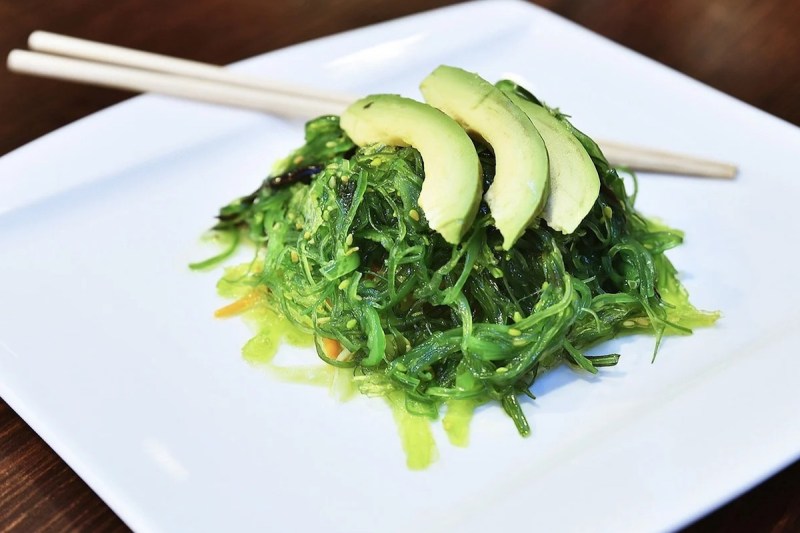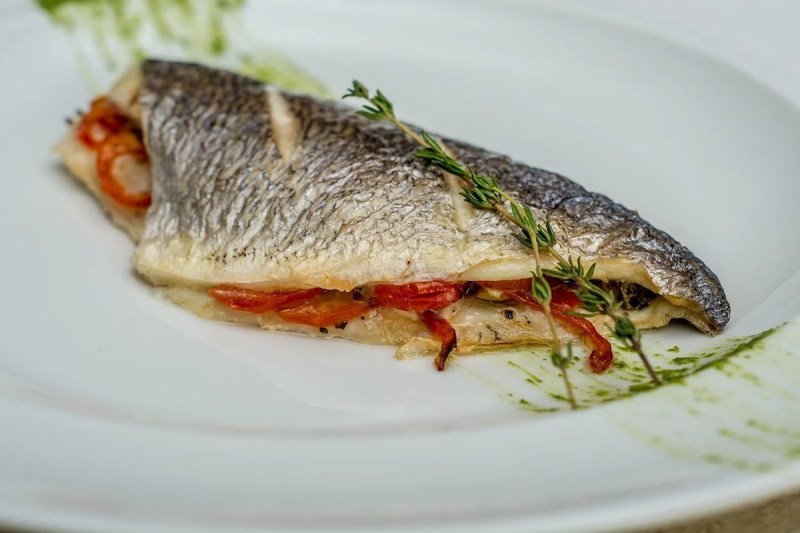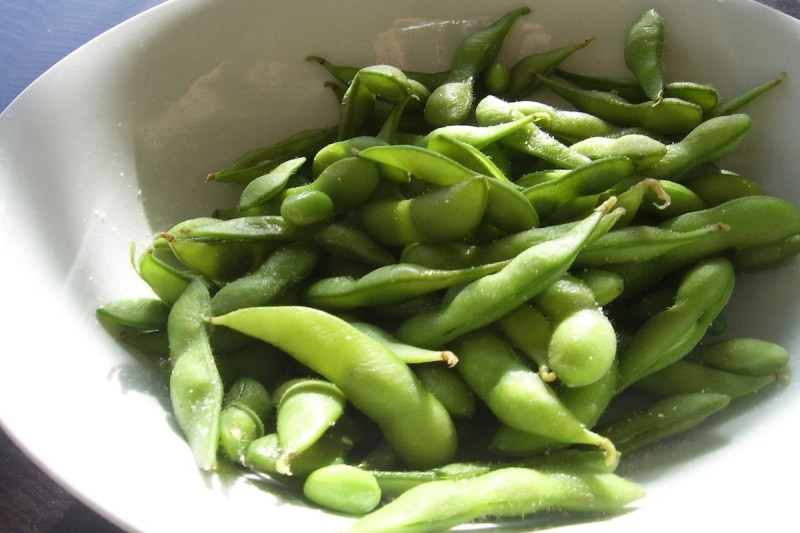Omega-3 fatty acids often called omega-3 fats, or simply “omega-3’s,” are a type of polyunsaturated fats demonstrated to have numerous health benefits such as reducing inflammation, lowering the risk of cardiovascular disease, supporting the beneficial bacteria residing in your gut microbiome, and improving brain function and preventing mental decline. Omega-3 fatty acids are essential fats, which means they must be consumed through the diet since the body cannot manufacture them internally.
Three different fatty acids are grouped together to form the triad of omega-3 fatty acids. Alpha Linolenic Acid (ALA), Eicosapentaenoic Acid (EPA), and Docosahexaenoic Acid (DHA). In general, ALA can be found in plant sources such as nuts and seeds, while DHA and EPA are abundant in fish and seaweed. It’s ideal to get a mix of all three omega-3 fatty acids for optimal health. The adequate intake (AI), which is a measure of the recommended daily intake, is 1,600 mg per day. Lastly, while the foods below are among the best dietary sources of omega-3 fatty acids, fish oil supplements and cod liver oil are alternative ways to ensure adequate intake of healthy omega-3 fatty acids.
Mackerel

Mackerel is a small fatty fish that is often enjoyed smoked and served as whole fillets. Though small in size, the nutrient content is impressive. Along with roughly 4,100 mg of heart-healthy omega-3 fatty acids in a single piece of salted mackerel (or 5,130 mg in a 3.5-ounce serving), mackerel packs an impressive 200% of the recommended daily intake of vitamin B12, an essential nutrient important for energy generation and nerve conductivity. Mackerel is also rich in selenium.
Herring

Herring isn’t particularly popular in the United States, but in England, it’s common to see herring (referred to as “kippers”) on breakfast menus alongside eggs. Herring is a medium-sized oily fish and often sold canned after being cold-smoked, pickled, or precooked. It is rich in vitamin B12 and selenium, and also contains nearly 100% of the recommended daily intake of vitamin D, a fat-soluble vitamin vital for bone health and hormone production. Each medium fillet of herring contains about 950 mg of omega-3 fatty acids, while a full 3.5-ounce serving provides over 2,300 mg.
Flaxseeds

Flaxseeds are often the go-to source of omega-3 fats for vegans. These small seeds are often ground or milled to extract the oils. Flaxseeds are an especially potent source of alpha-linolenic acid (ALA) omega-3 supplements. One tablespoon of raw seeds has about 2,350 mg of omega-3 fatty acids, while the oil provides a whopping 7,260 mg per tablespoon. Flaxseeds also provide prebiotic fiber, which feeds the beneficial bacteria in your gut. Try adding them to homemade protein balls, salads, or oatmeal.
Salmon

Salmon is arguably the poster child or the most notorious food high in omega-3 fatty acids, and it’s certainly up there in terms of providing the highest amounts of these healthy fatty acids. A 3.5-ounce serving of salmon provides about 2,250 mg of omega-3 fatty acids, and a six-ounce fillet offers 4,250 mg or about 266% of the AI.
Anchovies

Anchovies are tiny, oily fish often used to flavor sauces or salad dressings, or enjoyed as toppings on anything from pasta to pizza or appetizers. A 3.5-ounce serving of canned anchovies has about 2,110 mg of healthy omega-3 fatty acids. If you’d prefer an alternative small fish, sardines are also high in omega-3 fatty acids, with nearly 1,500 mg in 3.5 ounces.
Caviar

When you’re in the mood to dine lavishly, you can get your omega-3 fats from caviar, which consists of fish eggs (roe). These beautiful pearls often are used in Japanese cuisine along with other fine dining applications and impart a briny flavor. Caviar is packed with omega-3 fatty acids, providing over 1,000 mg of these healthy fats in a mere tablespoon. Not that it’s common to eat a full 3.5 ounces of this delicacy, but simply for comparison purposes, 3.5 ounces of caviar contains roughly 6,800 mg of omega-3 fatty acids.
Oysters

Not every oyster contains a pearl, but when it comes to nutrition content, oysters can certainly be seen as the ocean’s pearls. Oysters are the best dietary sources of zinc, containing an impressive 52 mg or 472% of the DV of this immune-supporting mineral in just six oysters. This same serving size also provides 370 mg of omega-3 fatty acids.
Chia Seeds

Chia seeds contain protein, fiber, and minerals like selenium, iron, magnesium, and zinc. There are also over 5,000 mg of omega-3 fatty acids per ounce of chia seeds. They can be soaked into a chewy pudding, sprinkled on salads, added to granola or atop yogurt, and blended into smoothies.
Seaweed

Seaweed and algae are often sourced for vegan omega-3 supplements because of their high content of these essential fats, and the fact that they are one of the few plant groups that contain both DHA and EPA. Most plant-based sources of omega-3 fatty acids only contain ALA.
Seabass

Seabass is a fatty fish common to Japanese and South American cuisine. In addition to selenium and protein, seabass also contains 470 mg of DHA and 180 mg of EPA omega-3 fatty acids per serving. Another fatty fish option more common in the United States is trout. Trout has 440 mg of DHA and 400 mg of EPA per serving, along with vitamin D and potassium, which may help lower your blood pressure.
Walnuts

Walnuts are excellent for your skin and hair because they contain nourishing vitamin E along with healthy fats, including over 2,500 mg of omega-3 fatty acids per ounce or seven walnuts. Consider adding them to yogurt, nutritious cereals, salads, or enjoying them as a pre-workout snack.
Edamame

Soybeans are a type of legume, along with beans, lentils, and peas. They are packed with antioxidants and phytonutrients, which have been shown to improve prostate health and reduce the risk of certain cancers. Whether you enjoy edamame, tofu, tempeh, or roasted soybeans, you’ll also get a good dose of omega-3 fatty acids. One cup of tofu provides 1,467 mg (92% AI) of omega-3 fats. If you prefer other legumes, you can get about 20% of the AI in a serving of navy beans or pinto beans.



